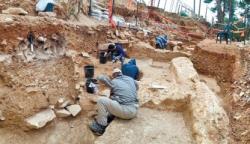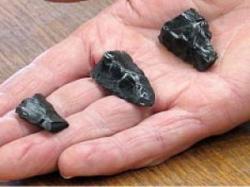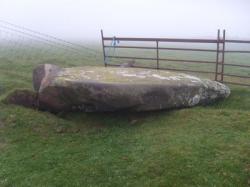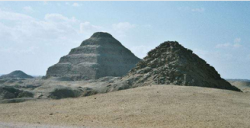INSTITUT SUPERIEUR D'ANTHROPOLOGIE
INSTITUTE OF ANTHROPOLOGY
ONLINE COURSES / COURS A DISTANCE
NEW OPEN COURSE : JANUARY 2013
HRM 104 : INTRODUCTION TO INTANGIBLE CULTURAL HERITAGE
REGISTER NOW
ISRAËL –  Kiryat Hayovel - Archaeologists with the Israel Antiquities Authority have uncovered a large, well-constructed agricultural estate in west Jerusalem that dates to the Hellenistic and Roman periods. The remains, which include a wine press, outdoor stoves, canals and large amounts of pottery, were first discovered during construction work on a rail line in the Jerusalem neighborhood of Kiryat Hayovel. Given the remains that have been identified so far, archaeologists believe there is much more to be discovered. “We discovered rock foundations in the buildings, pointing to a huge investment,” said lead archaeologist Daniel Ein Mor. “The quality of the construction is excellent, so I wouldn’t be surprised if future findings reveal it is even something bigger, maybe a settlement.” Located some distance from the walls of Hellenistic and Roman Jerusalem, Ein Mor believes the farm was likely built to take advantage of the cultivable, terraced fields surrounding the nearby Ein Karem stream.
Kiryat Hayovel - Archaeologists with the Israel Antiquities Authority have uncovered a large, well-constructed agricultural estate in west Jerusalem that dates to the Hellenistic and Roman periods. The remains, which include a wine press, outdoor stoves, canals and large amounts of pottery, were first discovered during construction work on a rail line in the Jerusalem neighborhood of Kiryat Hayovel. Given the remains that have been identified so far, archaeologists believe there is much more to be discovered. “We discovered rock foundations in the buildings, pointing to a huge investment,” said lead archaeologist Daniel Ein Mor. “The quality of the construction is excellent, so I wouldn’t be surprised if future findings reveal it is even something bigger, maybe a settlement.” Located some distance from the walls of Hellenistic and Roman Jerusalem, Ein Mor believes the farm was likely built to take advantage of the cultivable, terraced fields surrounding the nearby Ein Karem stream.
http://www.biblicalarchaeology.org/daily/biblical-sites-places/jerusalem/hasmonean-farm-identified-in-west-jerusalem/
FRANCE –  Le Mans - En vue du réaménagement du tunnel, des places du Jet-d'Eau et des Jacobins, dans le cadre du chantier de la deuxième ligne de tramway, les premiers arbres sont tombés il y a quinze jours. Entre le haut du tunnel et les cafés de la place, une belle portion de muraille est maintenant dévoilée. Les archéologues ont quelques jours pour ausculter cette portion des fortifications construites entre 270 et 310 de notre ère. Une belle occasion d'établir des relevés à l'endroit où se trouvait une tour, dite Fayau. Détruit au milieu du XVIIIe siècle, l'édifice reste largement méconnu des chercheurs comme d'autres. 11 tours sont encore visibles sur les 30 ou 35 qui ont pu exister. Les archéologues du Capra s'appuient sur les nouvelles technologies, la 3 D notamment, qui leur permettent notamment de passer moins de temps sur le terrain. Le travail consistera ensuite à analyser et à restituer l'ensemble des données collectées. Les promeneurs un peu attentifs ont déjà observé les traces d'une ancienne ouverture réalisée dans la muraille. Il s'agit d'un tunnel percé avant celui qu'on connaît aujourd'hui. Beaucoup plus petit (environ 1,70 m de large sur 1,90 de haut), ce tunnel de 170 m de long, coffré de bois, débouchait dans l'axe du pont Issoire. Pas forcément très sûr (des affaissements, au-dessus, avaient été constatés) et insalubre, l'édifice a été fermé en 1858. Est-il entièrement comblé ? Pas de réponse certaine sur ce point. On constate aussi que sous le monumental appareillage romain, se trouvent des reprises en sous-oeuvre, datant sans doute du percement de l'actuel tunnel. « L'enceinte a dû bouger à l'époque, suggère Vincent Bernollin. On avait notamment fait des percements à la dynamite ! »
Le Mans - En vue du réaménagement du tunnel, des places du Jet-d'Eau et des Jacobins, dans le cadre du chantier de la deuxième ligne de tramway, les premiers arbres sont tombés il y a quinze jours. Entre le haut du tunnel et les cafés de la place, une belle portion de muraille est maintenant dévoilée. Les archéologues ont quelques jours pour ausculter cette portion des fortifications construites entre 270 et 310 de notre ère. Une belle occasion d'établir des relevés à l'endroit où se trouvait une tour, dite Fayau. Détruit au milieu du XVIIIe siècle, l'édifice reste largement méconnu des chercheurs comme d'autres. 11 tours sont encore visibles sur les 30 ou 35 qui ont pu exister. Les archéologues du Capra s'appuient sur les nouvelles technologies, la 3 D notamment, qui leur permettent notamment de passer moins de temps sur le terrain. Le travail consistera ensuite à analyser et à restituer l'ensemble des données collectées. Les promeneurs un peu attentifs ont déjà observé les traces d'une ancienne ouverture réalisée dans la muraille. Il s'agit d'un tunnel percé avant celui qu'on connaît aujourd'hui. Beaucoup plus petit (environ 1,70 m de large sur 1,90 de haut), ce tunnel de 170 m de long, coffré de bois, débouchait dans l'axe du pont Issoire. Pas forcément très sûr (des affaissements, au-dessus, avaient été constatés) et insalubre, l'édifice a été fermé en 1858. Est-il entièrement comblé ? Pas de réponse certaine sur ce point. On constate aussi que sous le monumental appareillage romain, se trouvent des reprises en sous-oeuvre, datant sans doute du percement de l'actuel tunnel. « L'enceinte a dû bouger à l'époque, suggère Vincent Bernollin. On avait notamment fait des percements à la dynamite ! »
http://www.lemans.maville.com/actu/actudet_-Les-archeologues-auscultent-un-bout-de-muraille_fil-2256643_actu.Htm
USA –  Paisley Caves - Several years ago an amazing discovery was made about 220 miles southeast of Eugene, just outside a small town known as Paisley. In eight caves on the outskirts of Paisley some of the earliest evidence of human activity in the Americas was found. Radiocarbon dates of organic material at the site dated to about 14,000 years ago, while material in the strata just above this material dated to about 13,000 to 13,200 years ago. Making this site the oldest in Oregon and the oldest site that contained Western Stemmed Points. Western Stemmed Points refers to a type of projectile point, such as a spear or arrowhead. enkins, lead researcher of the Paisley Caves site continued digging again at Paisley Caves in 2009 for several more years. Artifacts gathered during this time period were then sent to thirteen organizations to be independently tested. In July of this year the results of these 13 studies were released. The finding of the research indicated that the site at Paisley Cave was at least 13,200 years old! Bringing back the date of western activity several thousand years, and rewriting some of the history books. “From our dating, it appears to be impossible to derive Western Stemmed points from a proto- Clovis tradition," Jenkins said. "It suggests that we may have here in the Western United States a tradition that is at least as old as Clovis, and quite possibly older. We seem to have two different traditions co-existing in the United States that did not blend for a period of hundreds of years." What does all of this mean and why is the archaeological community enthusiastic about it? Hofriether, a biologist in DNA laboratory of the University of York in the United Kingdom says, "The results of this study are exciting, because they show that the hypothesis that the Clovis people were the first Native Americans, which has been the prevailing idea for the last decades, is wrong. Now researchers need to come up with a new model for the settling of the Americas." So how did these early humans get here? Some new hypotheses are emerging indicating that the first to come to the Americas may have come by sea.
Paisley Caves - Several years ago an amazing discovery was made about 220 miles southeast of Eugene, just outside a small town known as Paisley. In eight caves on the outskirts of Paisley some of the earliest evidence of human activity in the Americas was found. Radiocarbon dates of organic material at the site dated to about 14,000 years ago, while material in the strata just above this material dated to about 13,000 to 13,200 years ago. Making this site the oldest in Oregon and the oldest site that contained Western Stemmed Points. Western Stemmed Points refers to a type of projectile point, such as a spear or arrowhead. enkins, lead researcher of the Paisley Caves site continued digging again at Paisley Caves in 2009 for several more years. Artifacts gathered during this time period were then sent to thirteen organizations to be independently tested. In July of this year the results of these 13 studies were released. The finding of the research indicated that the site at Paisley Cave was at least 13,200 years old! Bringing back the date of western activity several thousand years, and rewriting some of the history books. “From our dating, it appears to be impossible to derive Western Stemmed points from a proto- Clovis tradition," Jenkins said. "It suggests that we may have here in the Western United States a tradition that is at least as old as Clovis, and quite possibly older. We seem to have two different traditions co-existing in the United States that did not blend for a period of hundreds of years." What does all of this mean and why is the archaeological community enthusiastic about it? Hofriether, a biologist in DNA laboratory of the University of York in the United Kingdom says, "The results of this study are exciting, because they show that the hypothesis that the Clovis people were the first Native Americans, which has been the prevailing idea for the last decades, is wrong. Now researchers need to come up with a new model for the settling of the Americas." So how did these early humans get here? Some new hypotheses are emerging indicating that the first to come to the Americas may have come by sea.
http://www.cannonbeachgazette.com/entertainment/article_b7409b5c-3f51-11e2-9574-0019bb2963f4.html
ROYAUME UNI –  Bedd Morris - An ancient monument has crashed to the ground after standing for more than 4,000 years as an important landmark. The famous standing stone at Bedd Morris, on Newport mountain, was snapped over the weekend, toppling over and crushing a nearby fence. Archaeologist Professor Geoffrey Wainwright, an expert who has worked on several sites in the Preselis, plans to play an active role in getting the stone reinstated.
Bedd Morris - An ancient monument has crashed to the ground after standing for more than 4,000 years as an important landmark. The famous standing stone at Bedd Morris, on Newport mountain, was snapped over the weekend, toppling over and crushing a nearby fence. Archaeologist Professor Geoffrey Wainwright, an expert who has worked on several sites in the Preselis, plans to play an active role in getting the stone reinstated.
http://www.westerntelegraph.co.uk/news/county/9303748.4_000_years_of_history_crashes_to_the_ground/?ref=rl
EGYPTE –  Saqqara - Polish archaeologists have discovered the entrance to a previously unknown tomb during excavation work in Egypt. The discovery was made at the historic necropolis of Saqqara, which had functioned as a burial ground for the Ancient Egyptian capital of Memphis. Archaeologists had been carrying out excavations at the tomb of a dignitary named Ichi, who served at the court of Pharaoh Pepi over 4000 years ago. The newly discovered tomb, which is connected to that of Ichi, lies within an area referred to as “the Dry Moat.” Archaeologists had long wondered whether the high rock walls of the Dry Moat might contain a series of tombs. “Actually none of us believed in this thesis,” commented leader of the excavations Professor Karol Mysliwiec, from Poland's Institute of Mediterranean and Oriental Studies, in an interview with the Polish Press Agency (PAP). “Our surprise was all the greater given that no similar tomb has been discovered to date in Egypt,” he added. So far, the team has only managed to uncover part of the entrance to the tomb. Inside, rubble climbs almost to the ceiling. The second phase of the excavation will take place next year.
Saqqara - Polish archaeologists have discovered the entrance to a previously unknown tomb during excavation work in Egypt. The discovery was made at the historic necropolis of Saqqara, which had functioned as a burial ground for the Ancient Egyptian capital of Memphis. Archaeologists had been carrying out excavations at the tomb of a dignitary named Ichi, who served at the court of Pharaoh Pepi over 4000 years ago. The newly discovered tomb, which is connected to that of Ichi, lies within an area referred to as “the Dry Moat.” Archaeologists had long wondered whether the high rock walls of the Dry Moat might contain a series of tombs. “Actually none of us believed in this thesis,” commented leader of the excavations Professor Karol Mysliwiec, from Poland's Institute of Mediterranean and Oriental Studies, in an interview with the Polish Press Agency (PAP). “Our surprise was all the greater given that no similar tomb has been discovered to date in Egypt,” he added. So far, the team has only managed to uncover part of the entrance to the tomb. Inside, rubble climbs almost to the ceiling. The second phase of the excavation will take place next year.
http://www.thenews.pl/1/11/Artykul/120979,Polish-archaeologists-find-unknown-tomb-in-Egypt
TURQUIE –  Laodicea - A church unearthed three years ago in the ancient city Laodicea, located in Turkey's Western province of Denizli, and which is the seventh church listed in the Bible’s Book of Revelations, will open for visitors next year. The head of excavations in the ancient city, Professor Celal Şimşek, said eight restorers and 15 workers had been working nonstop to restore mosaics on the floor of the church. The church, significant in Christian history, has an unspoiled baptismal font. Şimşek said their goal was to open the church in 2013, the 1,700th year of the Edict of Milan. The main walls of the church have already been restored, he said.
Laodicea - A church unearthed three years ago in the ancient city Laodicea, located in Turkey's Western province of Denizli, and which is the seventh church listed in the Bible’s Book of Revelations, will open for visitors next year. The head of excavations in the ancient city, Professor Celal Şimşek, said eight restorers and 15 workers had been working nonstop to restore mosaics on the floor of the church. The church, significant in Christian history, has an unspoiled baptismal font. Şimşek said their goal was to open the church in 2013, the 1,700th year of the Edict of Milan. The main walls of the church have already been restored, he said.
http://www.hurriyetdailynews.com/